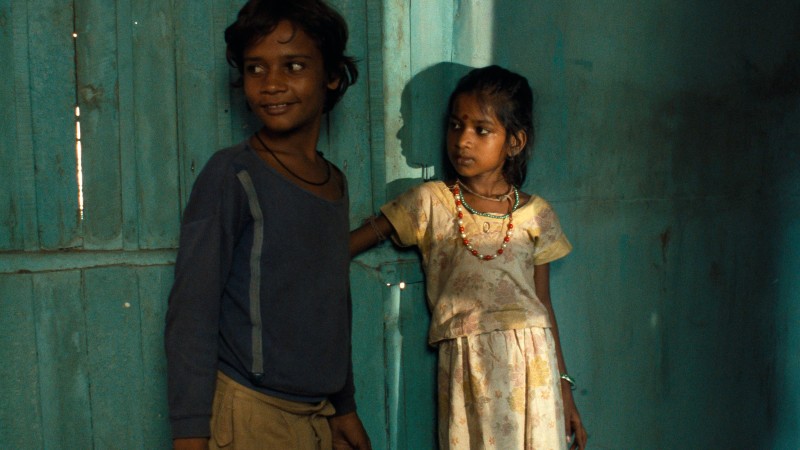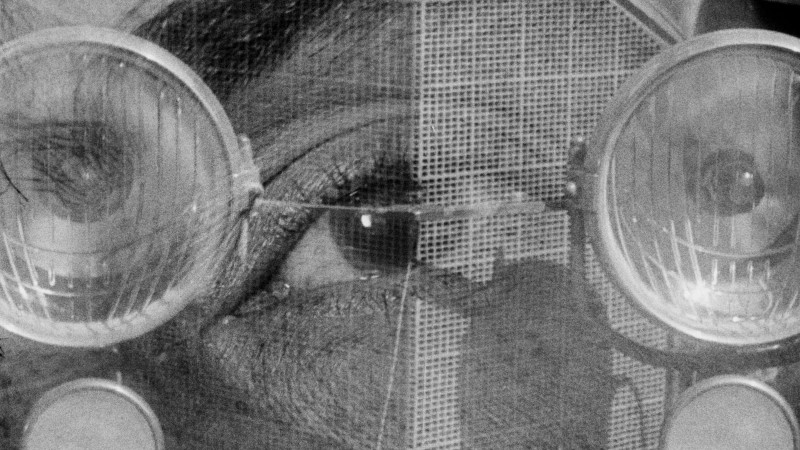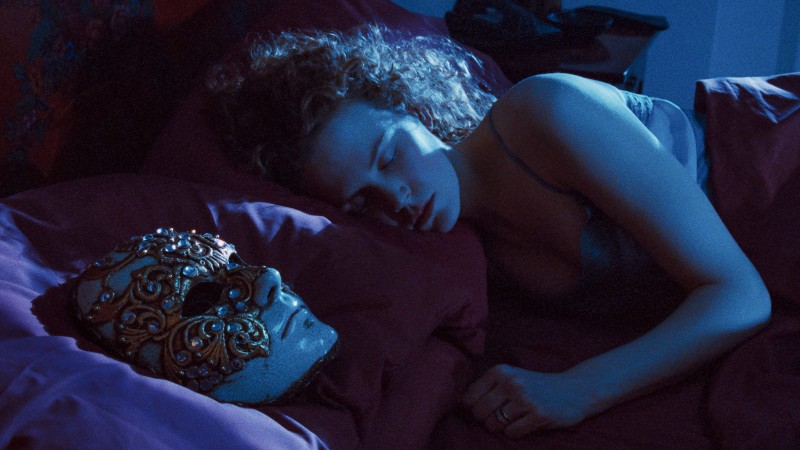L’argent: The Weight of the World

Robert Bresson (1901–99) was not a misunderstood, constantly frustrated artist like Orson Welles; he wasn’t an exiled, persecuted, and repeatedly imprisoned one like Sergei Parajanov; he didn’t die tragically young like Jean Vigo. For the most part, Bresson managed to make exactly the films he wanted, in his own good time. He lived almost one hundred years and, by any decent standard of cultural consensus, achieved within his life span the recognized status of being among the premier artists of the twentieth century. The French filmmaker Olivier Assayas once declared, with forgivable extravagance: “I still consider Bresson the greatest filmmaker ever; I have complete admiration for every single frame of his films, every single moment.”
A sui generis career, to be sure, unlike that of almost any other creative soul working within the necessarily money-driven world of feature film production, and Bresson used those advantages, and the rare industrial largesse he enjoyed, to patiently refine his own approach. Indeed, this quest for refinement—in the sense of distillation, concentration, purification—was what really drove him. Bresson was, in the truest and richest sense of the word, a minimalist. In major works including Diary of a Country Priest (1951), Pickpocket (1959), Au hasard Balthazar (1966), Mouchette (1967), and Lancelot du lac (1974), he pared down every scene and shot, every movement and utterance of his performers, to the bare essentials. Each situation, image, and sound had to have a sharpness, a freshness, a novelty. That is why Bresson’s cinema is forever modern, forever new, no matter when, where, or how we encounter it—and why Spanish filmmaker Víctor Erice asserted that it is, for all time, the perfect cinema to inspire young filmmakers and cinephiles, “a poem that traces in the air the dream of a dawn that has no end.”
Bresson told his stories in astoundingly matter-of-fact ellipses or leaps in time; only the most significant moments of information and sensation counted for him. He fragmented the spatial relations of each location and incident, making the world both a fiercely angular labyrinth and an abiding, disorienting mystery. He dedramatized melodramatic action, particularly through the use of nonactors, “models,” as he called them, who blankly recite their lines. Indeed, Bresson’s conception of the relation between character and actor, self and performance, became, in time, the essential attitude of postmodern cinema in the era of Hal Hartley and many others. As Bresson wrote in his book of epigrams, aphorisms, and reflections, Notes on the Cinematograph: “The actor learning his part presupposes a ‘self’ known in advance—which does not exist.”
Bresson’s films cast a spell upon their viewers. They demand and induce a kind of hyperattentiveness; spectators tend to remember very precise, concrete details from them, like the sound of a babbling brook or the sight of a closing door. Their pace and focus are mesmerizing. “What I seek is not so much expression by gesture, word, or mime,” he once explained, “as expression by the rhythm and combination of images, by their position, relationship, and number.” And on another occasion: “Build your film on white, on silence, and on stillness.” Yet his films amount to so much more than pure experiments with form. The faces he shows are so full of tormented desire and soulful yearning, and the ever-moving hands trace (as filmmaker Philippe Garrel once said) the “manual work of the unconscious.” Bresson confounds those who like to reject a certain self-conscious, mannered type of cinema as merely “formalist,” and hence devoid of emotional involvement—a formalist he surely was, down to the tips of his toes, but the various self-imposed rules and strictures governing how he filmed scenes only enhance, rather than detract from, the substance and deep feeling of his narratives.
Most of Bresson’s films tell the same basic story: the passage of a character from confinement to freedom. There are many levels to this apparently simple pattern. For decades, the best commentators on Bresson, like the French critic André Bazin, explored the religious, spiritual, and existential aspects of the Bressonian allegory: humans are born in sin, fallen from grace, and they travel with difficulty, tempted at every turn, toward some kind of absolution or transcendence. But in his three final films—Lancelot du lac, The Devil, Probably (1977), and L’argent (1983)—another, darker mood predominates: a bleak vision of society as a hellish prison, without any discernible avenue of escape, let alone hope of redemption.
L’argent shares with two earlier Bresson films, A Man Escaped (1956) and Pickpocket, a faint ostensible relation to the conventions of the action-thriller genre. Alongside the excruciatingly elongated tension of a jailbreak in the former and the daredevil thievery in the latter, L’argent boasts a spray of criminal acts—most strikingly the hyperminimalist, elliptical presentation of a bungled bank robbery, as performed by Yvon (Christian Patey) and his partners. Yet the tone of this film, its arrangement of content and form, is unique, even for Bresson.
On the one hand, all sense of spectacular excitement is leached out: L’argent has a steady rhythm and a largely monochrome mood, no matter what happens in it. Where Bresson allowed both A Man Escaped and Pickpocket to momentarily soar with passages of classical music accompaniment or accelerating montage sequences, L’argent plays it cool all the way to the end. On the other hand, an awful lot does happen within its brisk eighty-four minutes—with far more evident variety of location and event than in the relatively constrained or repetitive premises of those two earlier films. In contradistinction to The Devil, Probably, which largely evacuates plot in order to offer a rambling inventory of modernity’s ills, in L’argent the narrative (distilled and adapted from Tolstoy’s novella The Forged Coupon) hardly stops for breath as it piles incident upon incident. The automatic money dispenser shown in the first shot under the credits gives the cue: there is something deliberately machinelike and glacial about the film, like a relentless, inexorable contraption of doom. (Of all Bresson’s films, it is evidently the one that has most influenced Michael Haneke.)
L’argent has an unusual structure, breaking into two unequal parts. Its first hour tracks no fewer than four simultaneous narrative lines (but fewer, in fact, than the number Tolstoy juggled in scarcely fifty pages!). These lines are linked through a succession of crossovers, each of which leads to further consequences and complications. It all starts with young Norbert (Marc Ernest Fourneau) and his pal Martial (Bruno Lapeyre), and their fiendish idea to make and use false money. We will later see a little of these two at home and at school, in relation to parents and other authority figures, but they disappear from the film’s fabric relatively quickly. More screen time is devoted to Lucien (Vincent Risterucci), an employee at a photography shop who lies to the police and in court in order to cover up the fact that his boss (Didier Baussy) sneakily passed the fake note on to Yvon. Lucien’s subsequent bumpy trajectory is the film’s most elliptically presented thread: he journeys from seemingly servile acquiescence to a kind of saintly rebellion (his exact politique is hard to make out), but his spell in jail is where his lifeline appears to be abruptly and enigmatically severed, offscreen.
Jail is also where Lucien and Yvon—victim of the hastily transferred note and the lies used to cover this action—briefly intersect. Yvon’s story is sad all the way down the line, and is the spine of L’argent: in succession, he will lose his job, his freedom, his wife and child (the latter will even die while he is incarcerated). And it is Yvon who, eventually, will take us to the second part of the story, comprising its final twenty-four minutes. Now the film’s attention contracts, as Bresson focuses on Yvon’s interaction with a character identified only as the “gray-haired woman” (Sylvie Van den Elsen) and with other people in her household.
Yvon and this woman share, instantly, what is undoubtedly the most perverse bond in any Bresson film: she declares her commitment to a code of infinite forgiveness, no matter what horrendous crimes against human nature he has committed—and, in that vow, she may indeed be inviting him to kill her, thus putting a swift end to her daily grind and misery.
It will all end badly and bloodily, but not before some poignant moments of simple grace, such as when Yvon helps his new companion at her outdoor clothesline, or when he picks hazelnuts from tree branches—this action filmed, of course, in shots of hands at work.
L’argent is an imposing, even forbidding work; in one of its earliest reviews, Mike Sarne of the British magazine Films categorically stated (and not without admiration): “Bresson is not trying to please . . . The film is not designed to be liked.” It has a stark, even violent quality—the violence not of represented acts (these are, on the contrary, always very tactfully, almost shyly depicted) but of razor-sharp cuts and scene transitions. To a twenty-first-century spectator, there are passages (especially during its first hour) when the repeated, documentary-like images of hands prying into cash registers or ATMs can almost resemble a hidden-camera, reality-TV “exposé,” like the Food Network’s Mystery Diners: social reality seems entirely composed of, on the one hand, the spaces in which money and other items deemed desirable (or dangerous) are locked up and, on the other hand, all the clever ways that cagey citizens will devise to break into or out of these spaces.
This comparison is not entirely facetious. As in The Devil, Probably, Bresson is concerned here with offering a sketch or outline of the contemporary Western world. Individuals choose to perform certain deeds—like counterfeiting a note, or what philosophers call the acte gratuit of senseless murder—but it is not, ultimately, free will that is running the show. There seems to be a higher power overseeing the shape of events, and it is neither God (as in several of Bresson’s earlier, more reverent films) nor even the director himself—L’argent deftly sidesteps the Fritz Lang–style aura of an omnipotent puppet master behind the scenes, pulling the strings of his creatures.
Rather, the ominous “agent” at work here is money: the workings of an entire capitalist system boiled down to the movement of a forged note and the unstoppable catastrophe that it triggers. As money travels, it dehumanizes everyone it touches, no matter their class status or religious or ideological beliefs. What, in other hands, could be played as the premise for a screwball comedy (the phony dollar bill that caused such riotous havoc in a small-town community!) is treated by Bresson as the darkest tragedy.
The critic Philippe Arnaud (1951–96), one of the most reliable specialists on Bresson, once described Yvon in L’argent as a “refractory” character, indeed the most refractory that the director ever portrayed—meaning that he is utterly opaque, impenetrable, unreadable. Bresson regularly underplays emotional expression, but with Patey as Yvon he reaches the point of extinguishing it entirely—Patey’s flat delivery, in the photography shop, of the line “They’re crazy!” as he is about to be hauled off by the cops is an almost comical moment of the characteristically Bressonian disjunction between what was on the script page and what registers on the screen itself.
More crucially, now gone in L’argent is the psychological interiority that marked Bresson heroes like the country priest (Claude Laydu), or Fontaine (François Leterrier) chipping away alone in his cell in A Man Escaped. This is not simply a matter of Bresson progressively abandoning, over the course of his career, the device of a “thought track,” voice-over narration. Something colder and more despairing has occurred: it is not the case that Bresson denies us access to the “inside” of his characters, but rather that there is no longer any “deep” mind, heart, or soul to access. There is only a sometimes unpredictable mix of animal impulses and reactive behaviors, aggressive outbursts and defensive mechanisms.
Yvon, in a sense, “follows the money” all the way to the end, enslaved to its avaricious logic. Yet his ultimate question to his kindly benefactor—“Where’s the money?”—is (as Arnaud points out) almost the rhetorical riddle of a sphinx: it requires no real, practical answer. Yvon goes through the motions of theft and killing, but they are meaningless even to him at this point; there is no desired outcome or goal involved. Survival, revenge, redemption—these motives meant a lot to Tolstoy in his time, but they don’t count for much anymore in the completely dehumanized, alienated, anonymous world that Bresson captures here.
Many have remarked on what an unusual and disconcerting “testament” film L’argent is for Bresson to have made in his eighties. He didn’t intend it to be his last (he kept pursuing a long‑standing Genesis project, featuring mainly animals in the cast, until it definitively evaporated), but its apocalyptic gong sounded as the fitting, if despairing, close to his career. The great Josef von Sternberg once defined the “lasting vibration,” or Nachklang, that every assiduous film director seeks to achieve as an “after-timbre” or “ghost-resonance” that persists once his or her film has vanished from the screen. In the case of L’argent, I can testify to the power of this resonance: as an eager young cinephile, I couldn’t sleep for two days after the double-bill whammy of it and The Devil, Probably at the Melbourne Film Festival in 1983.
The world is certainly hard in Bresson’s films, but it is also luminous—hopeless and hopeful, miserable and magical at the same time. Critics argue these days about whether Bresson was really a devout believer or a closet atheist, whether he embraced despair or attained a new level of serenity in his last films, whether he was gobsmacked by the growing presence of evil in the world or instead tried to understand this sickness in manageable, human, one-to-one terms. I don’t think we need to adjudicate these arguments once and for all. The brilliance, the beauty, and the mystery of Bresson’s work lie in the rich confusion churning away at the heart of his best films, with their unforgettable moments.
Moments like these: the young Mouchette (Nadine Nortier) rolling down a little hill several times over until she finally manages to drown herself; the strange ecstasy of the fallen teenager (Anne Wiazemsky) who covers her donkey, Balthazar, in a wreath of flowers, as in a marriage ceremony; the woman (Isabelle Weingarten) who suddenly moves to her returned lover offscreen, leaving behind her sad new friend (Guillaume des Forêts) at the end of Four Nights of a Dreamer (1971). And that gorgeous, green, plaintively simple image of a man and woman picking hazelnuts from a tree in L’argent. Bresson preached no message in such scenes; rather, he aimed to make us gently captive to the eternal paradoxes, social forces, and human impulses that, for him as for us, constitute the weight of the world.




